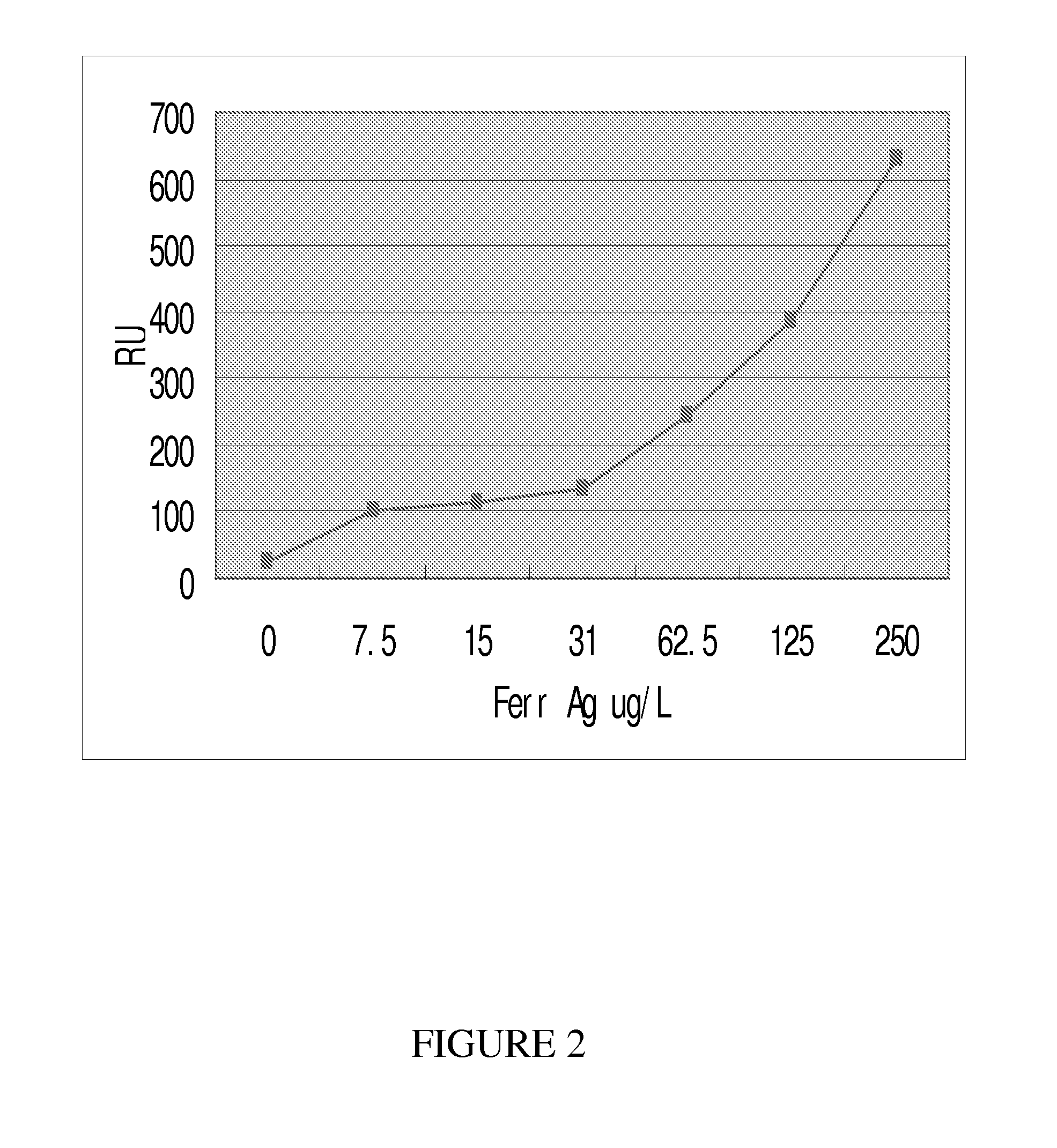Method to assess cancer susceptibility and differential diagnosis of metastases of unknown primary tumors
- Summary
- Abstract
- Description
- Claims
- Application Information
AI Technical Summary
Benefits of technology
Problems solved by technology
Method used
Image
Examples
example 1
Screening and Determination of Tumor Markers Related to Susceptibility to Cancer
[0050](A) Testing sample: serum (about 2 ml)
(B) Tumor markers represented: CEA, CA125, CA19-9, CA242, CA15-3, CA724, CA50, AFP, Cyfre21-1, β-HCG, TPA, Fer, NSE, PSA, SCCA, et al.
(C) Procedure:
[0051]Step One: Formation of a Linking Layer on the Surface of a Gold-Film Glass Chip:
[0052]1. Cleanliness of Substrate
[0053]Metal substrates (copper, silver, aluminum or gold) were firstly cleaned with strong oxidizing chemicals (“piranha” solution-H2SO4:H2O2) or argon plasmas, then the surfaces of these substrates were washed with ultra pure water and degassed ethanol. After rinsing, the substrates were dried with pure N2 gas stream.
[0054]2. Preparation of Self-Assembled Monolayers (SAMs)
[0055]Single-component or mixed self-assembled monolayers (SAMs) of organosulfur compounds (thiols, disulfides, sulfides) on the clean metal substrate have been widely applied for chemical modification to develop chemical and biol...
example 2
Differential Diagnosis of Metastases of an Unknown Primary Tumor
[0108](A) Testing sample: serum (about 2 ml)
[0109](B) Tumor markers represented: AFP, CEA, β-HCG, CA125, CA19-9, CA15-3, PSA, Calcitonin, et al.
[0110](C) Procedure:
[0111]The preparation of the biochip are the same as described in Example 1, except that the antibodies were corresponded to tumor markers selected from the group consisting of AFP, CEA, β-HCG, CA125, CA19-9, CA15-3, PSA, and Calcitonin.
[0112]In summary, as illustrated from the above detailed description and examples, the present invention demonstrates that the concentrations of different tumor markers in a serum sample were positively related to the RU. In addition, the present invention also provides a more efficient formula to make the dextran coated sensor chip for improved immobilization of tumor marker related antibodies. The present invention demonstrates that SPR technology can be used to reliably detect tumor marker related antibodies coated on the l...
PUM
| Property | Measurement | Unit |
|---|---|---|
| Concentration | aaaaa | aaaaa |
Abstract
Description
Claims
Application Information
 Login to View More
Login to View More - R&D
- Intellectual Property
- Life Sciences
- Materials
- Tech Scout
- Unparalleled Data Quality
- Higher Quality Content
- 60% Fewer Hallucinations
Browse by: Latest US Patents, China's latest patents, Technical Efficacy Thesaurus, Application Domain, Technology Topic, Popular Technical Reports.
© 2025 PatSnap. All rights reserved.Legal|Privacy policy|Modern Slavery Act Transparency Statement|Sitemap|About US| Contact US: help@patsnap.com


